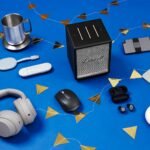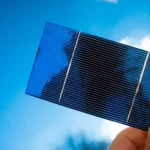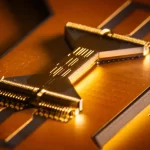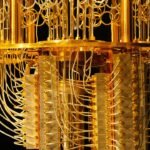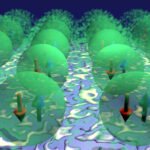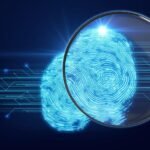The Enchilada Trap: New Device Paves the Way for Bigger and Better Quantum Computers
Sandia National Laboratories has achieved a significant milestone by successfully manufacturing its inaugural batch of an advanced ion trap named the Enchilada Trap. This cutting-edge device plays a central role in the development of specific quantum computers, marking a notable stride in the realm of quantum computing.
Dubbed the Enchilada Trap, this innovative creation from Sandia enables researchers to construct quantum computers with enhanced capabilities. The ion trap, a type of microchip that confines electrically charged atoms or ions, is a crucial component in the functioning of quantum computers. By holding and manipulating more ions, also known as qubits, these quantum computers can execute more intricate algorithms.
This development has broader implications, with multiple Enchilada Traps destined for use not only within Sandia’s operations but also at Duke University, where they will be employed for quantum algorithm experiments. Both institutions collaborate through the Quantum Systems Accelerator, which is among the U.S. National Quantum Information Science Research Centers supported by the Department of Energy’s Office of Science.
The Enchilada Trap, designed to accommodate up to 200 qubits through a network of five trapping zones, is poised to amplify the capabilities of quantum computers. The innovative design draws inspiration from its predecessor, the Roadrunner Trap, and both versions are crafted within Sandia’s Microsystems Engineering, Science, and Applications fabrication facility.
Daniel Stick, a leading researcher associated with the Quantum Systems Accelerator at Sandia, explains that a quantum computer equipped with up to 200 qubits, even with current error rates, might not surpass the computational power of conventional computers for solving practical problems. Nonetheless, this advancement opens avenues for researchers to test architectural configurations with a higher number of qubits, laying the foundation for more sophisticated quantum algorithms that can be employed in various fields including physics, chemistry, data science, and materials science.
By producing the Enchilada Trap, Sandia is facilitating the expansion of quantum computing into larger and more intricate systems. The device’s innovative design, characterized by branching electrodes, provides space for accommodating more ions and enables their rearrangement to perform complex calculations. This architectural solution is expected to be pivotal for scaling up the capabilities of ion trap-based quantum computers.
Moreover, the Sandia team has diligently tackled challenges related to electrical power dissipation, which could lead to undesired outcomes such as increased heat generation, surface outgassing, and electrical breakdown. Innovative design strategies have been implemented to mitigate these issues, underscoring the laboratory’s commitment to pushing the boundaries of quantum computing technology.
Zach Meinelt, lead integrator on the Enchilada Trap project, underscores the forward-thinking approach of the Sandia team. Collaborating closely with scientists and engineers, they aim to not only meet current requirements but also anticipate the future needs of the rapidly evolving field of quantum computing. Through continuous improvement and innovation, Sandia National Laboratories remains at the forefront of quantum technology advancement.


























